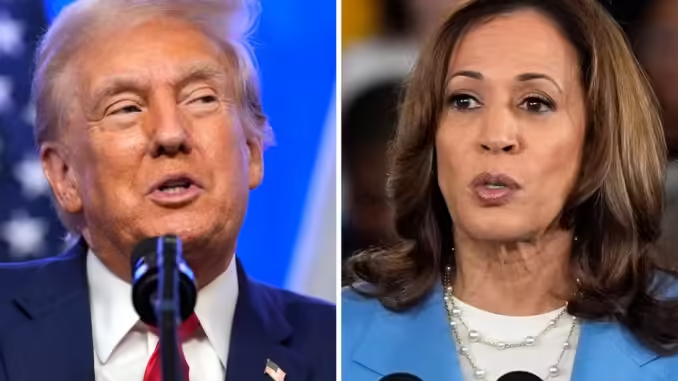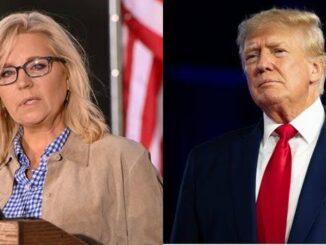
Vice President Kamala Harris holds a slight lead over former President Donald Trump among likely Minnesota voters, according to a new poll released six weeks before Election Day.
The Minnesota Star Tribune/MPR News/KARE 11 Minnesota Poll found Harris and Minnesota Gov. Tim Walz with a 48% to 43% lead over Trump and Sen. JD Vance of Ohio. Seven percent of respondents said they remain undecided, while fewer than 2% of those polled said they would vote for a third-party candidate.
The poll’s findings are based on interviews with 800 likely Minnesota voters, conducted Sept. 16-18. The poll’s margin of error is plus or minus 3.5 percentage points. The last Minnesota Poll in June — before President Joe Biden dropped out of the race — showed Biden with a narrower four-point lead over Trump, 45% to 41%.
Voters who have made a decision are firm in support of their candidate. More than 90% of those polled characterized themselves as either “very enthusiastic” or “somewhat enthusiastic” about their choice.
Valarie Jakosa, 57, said her opposition to Trump is grounded in his role in the failed insurrection on Jan. 6, 2021. Jakosa, a substitute teacher who lives in St. Paul Park, said she’s historically respected and been open to Republican candidates, but not Trump.
“I don’t see how somebody could do what the former president did and still be allowed to run for president,” she said.
A Navy veteran, Jakosa said she took an oath to uphold the U.S. Constitution. “If I, while I was in the Navy, had incited a riot that caused people to attack the Capitol, I would have gone to Fort Leavenworth because it would have been treasonous,” she said.
Another poll respondent, Nathan Witte of Fridley, supports Trump.
“I don’t think I’m necessarily a big fan of his personality all of the time or his rhetoric or the way he talks to people,” Witte, 35, said. “I can say I enjoyed a great amount of freedom while he was president and I’d like to see what he could do for our country in a second term.”
Witte said he hopes for more local control over revenue and tighter restraints at the borders.
Poll respondents gave Trump support on the economy and the border. When it came to abortion and protecting democracy, voters said they trusted Harris over Trump.
Witte said he’s not sure Trump can follow through on his promise of mass deportations, but that those with criminal backgrounds should be sent home. “We should have an understanding of who’s coming into our country and, frankly, we don’t,” Witte said.
Minnesotans have strong feelings about these two tickets. On overall favorability, 53% had an unfavorable impression of Trump while that number was 51% for Harris. Forty-six percent of Minnesotans have a favorable impression of Trump while 47% have a favorable impression of Harris.
Trump lost Minnesota to Hillary Clinton by just over a percentage point in 2016 and to Biden by about 7 points in 2020.
Divides on gender, education, geographic and racial lines persisted in the poll, with men preferring Trump and women and college graduates favoring Harris.
Likely voters in Hennepin and Ramsey counties preferred Harris three to two over Trump. The former president led Harris by a small margin in the suburbs surrounding those two counties.
Trump was also favored in rural Minnesota, albeit by a smaller margin than Harris enjoyed in Hennepin and Ramsey counties.
Warren Rumsch of Anoka, a 78-year-old retired biology teacher, is willing to look past Trump’s legal troubles, noting that other presidents have had “skeletons” and are still held in high regard.
“I look at what he accomplished in his first term,” Rumsch said. “When he talks about the swamp, I believe there’s a lot of problems in Washington. I think it’s good when we have a nonpolitician in Washington.”
Under Trump, Rumsch said, the border was more secure, the economy was better and he offered a more measured transition away from fossil fuels. “I’m concerned about the environment but I don’t think it’s wise of us to launch ourselves with such fervor into electric cars.”
Rumsch is also concerned about unauthorized immigrants and the strain that urban sprawl is creating.
“As a biologist, I worry about our environment. I see the spread of our cities and people moving into places that have wildlife,” he said. “I can remember the vast open spaces we had.”
Immigrants need to “melt into the melting pot,” he added.
The biggest favorability gap came between white and non-white Minnesotans. Non-white Minnesotans favored Harris over Trump three to one. White Minnesotans were closely divided on Trump’s favorability. Harris had a somewhat higher unfavorability rating among whites.
Bemidji-based business lawyer Charlie Dolson grew up on the Red Lake Indian Reservation and is an enrolled member. The 47-year-old Democrat served four years in the Marines, has an MBA and is firmly in the Harris-Walz camp.
“Democrats have sent the economy in the right direction,” Dolson said. “I am totally in disbelief that anybody would suggest tariffs. I can’t believe anyone would actually think that’s good for the economy.”
Trump is calling for significant tariffs on goods from other countries, saying it would boost domestic production.
Dolson said he appreciates that Democrats, including Walz, support road projects over austerity. “Being efficient and frugal is a good thing, but what I think is better is expanding the tax base,” he said.
Like fellow veteran Jakosa, Dolson also said Trump’s role on Jan. 6 is disqualifying. “At the end of the day you need ethical people,” Dolson said. “I would not ever be voting for him. Would I vote for a Republican with a better economic plan? I would definitely listen to it.”
FULL RESULTS
The Star Tribune, MPR News and KARE 11 interviewed 800 Minnesota registered voters between Sept. 16 and Sept. 18, 2024. All indicated they are likely to vote in the November general election. Findings from questions about the presidential race and key issues are below. Totals may not add up to 100% due to rounding. Click here for details about how the poll was conducted, a map of the Minnesota regions used in this poll and the demographics of the 800 respondents.



clomid other name can i get clomid online where to buy generic clomiphene without prescription clomiphene for low testosterone clomiphene pills for sale where buy generic clomid price can i buy cheap clomid without dr prescription